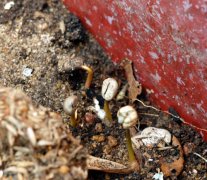The global distribution of coffee the growth habits of coffee

Coffee is a kind of drink that gives the public the impression that it is black, bitter, sleepless and excited. The coffee beans we see in the coffee shop are tea-brown, which belongs to roasted coffee beans, while the color of the coffee liquid is amber. Coffee comes from coffee beans, which are harvested and processed from the fruit of trees.]
Distribution of coffee:
Coffee trees grow in national gardens in tropical or subtropical regions with the equator as the center and between latitudes 25 degrees south and north, called the coffee belt. At present, coffee is produced in more than 60 countries, widely distributed in South America, Central America, the West Indies, Asia, Africa, Arabia, the South Pacific and Oceania. In terms of production, Brazil, which accounts for the largest output in the world, accounts for about 30%; the second is Central and South America, with Colombia (10%) as the center, accounting for 60%; followed by Africa and Arabia, accounting for about 30%; the remaining 10% are distributed in Asia and most islands.
The growth habits of coffee:
Coffee trees belong to the evergreen family of Akanaceae. They are tropical plants and are not cold-tolerant. Most of them are planted in areas with elevations of 300,400m, and also in highlands with elevations of 2000-2500 meters. But those who plant on slopes above 1500 meters above sea level have better quality. Coffee trees are most suitable for growing in an environment where the average temperature is about 20 degrees Celsius, annual precipitation is 1500-2000 mm, soil permeability is strong, and sunshine is suitable. Coffee is afraid of Frosts Descent and the cold winter, and must not be planted in the highlands where frost falls. In general, wild coffee trees can grow to about 8 meters, domestically planted, in order to protect the quality of coffee beans, easy to manage and harvest, and cut the height to 2 meters. Coffee beans begin to bear fruit 3-5 years after sowing, and 5-20 years is the harvest time. A coffee tree can bear about 3-5 kilograms of coffee cherries a year.
The most important coffee beans in the world mainly come from three original varieties: Arabica, Roberta and Liberia.
The Arabica coffee tree, which originated in Ethiopia, accounts for 70% of the world's coffee production, and almost all the world-famous coffee varieties are Arabica species.
Arabica coffee trees are suitable for growing in high mountains with large temperature difference between day and night, as well as soils with low humidity and good drainage. The ideal altitude is 500m-2000 m. The higher the altitude, the better the quality, but because of the weaker ability to resist diseases and insect pests, it is more difficult to grow than the other two kinds of coffee trees.
The Robosta coffee tree, which originated in the Congo in Africa, accounts for about 20% of the world's production. 30%. Robesta coffee tree is suitable for planting in the lowlands below 500 meters above sea level, has strong adaptability to the environment, can resist bad climate, resist diseases and insect pests, and does not need much manual care during soil preparation, weeding and pruning, and can be allowed to grow in the wild. It is a kind of coffee tree that is easy to cultivate. But its style is more bitter than Arabica, and its quality is much lower, so it is mostly used to make instant coffee. Because it is made in Africa, most Africans drink Robosta coffee.
The Liberian coffee tree is native to Liberia in Africa, and its cultivation history is shorter than that of the other two coffee trees, so the planting is limited to a few places such as Liberia, Surinam and Gaiana. As a result, the output accounts for less than 5% of the world's output. Liberian coffee trees are suitable for planting lowlands, and the coffee beans produced are very fragrant and bitter.
Important Notice :
前街咖啡 FrontStreet Coffee has moved to new addredd:
FrontStreet Coffee Address: 315,Donghua East Road,GuangZhou
Tel:020 38364473
- Prev

Introduction of coffee beans from coffee producing areas all over the world
Yunnan coffee in China is a product of the tropics. You may not believe that the best coffee producing area in the world is in Yunnan, China.
- Next

Observation on the growth process of Coffee Bean to Coffee Tree
The bud that has just emerged looks like it is ready to bloom. The seed next to the beginning of the newborn life has already sprouted, two beautiful young leaves, the small bud next to it needs refueling, it will sprout and grow leaves soon. Now the bud is not high, it is estimated to be only five or six centimeters.
Related
- Beginners will see the "Coffee pull flower" guide!
- What is the difference between ice blog purified milk and ordinary milk coffee?
- Why is the Philippines the largest producer of crops in Liberia?
- For coffee extraction, should the fine powder be retained?
- How does extracted espresso fill pressed powder? How much strength does it take to press the powder?
- How to make jasmine cold extract coffee? Is the jasmine + latte good?
- Will this little toy really make the coffee taste better? How does Lily Drip affect coffee extraction?
- Will the action of slapping the filter cup also affect coffee extraction?
- What's the difference between powder-to-water ratio and powder-to-liquid ratio?
- What is the Ethiopian local species? What does it have to do with Heirloom native species?

